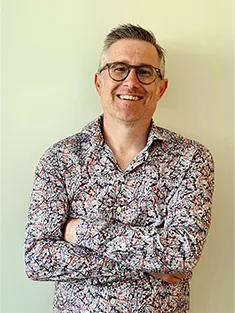Winner: 2022 Tilden Prize
Professor David K
University of York
For pioneering an understanding of molecular materials based on supramolecular gels.

Gels are fascinating materials that surround us in everyday life, from hair gel to Jelly Babies. However, while the gels used in everyday life are typically made of polymers, Professor Smith is instead interested in ‘supramolecular gels’ which reversibly assemble from small molecules. Such gels are highly tunable and can be programmed by molecular engineering to carry out unique functions. In recent years, Professor Smith has developed a new family of hydrogels and demonstrated their potential for high-tech applications. These gels are based on very simple low-cost building blocks, and scalable syntheses, demonstrating that supramolecular chemistry can approach realistic commercial goals. One of his gels is designed to extract and accumulate precious metals from waste water with the resulting metal-loaded gels then having further applications of their own, including antibacterial activity (silver), nano-electronics (gold) or catalysis (palladium). His research team has also developed drug delivery gels, including a system for nasal drug delivery that can achieve enhanced uptake into the brain to potentially treat conditions such as Parkinson’s Disease. Inspired by his own husband’s health problems with cystic fibrosis and organ transplantation, leading to his untimely death, Professor Smith has created hydrogels capable of supporting cell growth. By combining multiple components, the Smith group has created innovative ways of shaping and patterning such gels in order to direct and control cell growth. Such gels have potential future use in growing organs from a patient’s own stem cells, which could give rise to organs ‘on-demand’ and avoid problems with transplant rejection.
Biography
Dave Smith is Professor of Chemistry at the University of York, where he carries out research into smart nanomaterials. He was educated at the University of Oxford (BA 1993, DPhil 1996) and then carried out postdoctoral research at ETH Zurich, before being appointed Lecturer in York in 1999. He has remained in York and was promoted to full professorship in 2006. Dave received the RSC Bob Hay Award (2010) from the UK Macrocyclic and Supramolecular Group, and the RSC Corday Morgan Award (2013). He has published around 200 papers, and holds a number of patents, having pioneered an understanding of self-assembled supramolecular soft materials. A passionate educator, Dave received a Higher Education Academy National Teaching Fellowship (2014) and was named 'Most Inspiring Academic' (2019) by York University Students Union. He recently received the Society of Chemical Industry 'Science for Society' Award (2022). He has given outreach lectures to over 50,000 UK school students and developed his own YouTube chemistry channel, with over half a million views. He was named as one of the Top 25 Chemists to follow on Twitter – as @professor_dave he has over 25,000 followers. Dave works tirelessly towards equality, diversity and inclusion. He was shortlisted for the Gay Times Barbara Burford Award (2017) for activist work representing LGBTQ+ individuals working in STEM, and Chemical & Engineering News named him as one of their 'Trailblazer LGBTQ+ Chemists (2022). He is also well-known for work aiming to change the prevailing culture in STEM to make it more inclusive.
A diverse range of people, with a diversity of different ways of doing things not only creates vibrant and exciting teams, but also enables scientific breakthroughs ...
Professor David K Smith
Q&A with Professor David K Smith
How did you first become interested in chemistry?
Two schoolteachers inspired me to be a chemist when I was a sixth-form student. One was a showman, who liked to demonstrate exciting reactions and practical applications on the front bench, keeping the whole class on the edge of their seats. The other was more of a thinker, who loaned me his copy of Linus Pauling's The Nature of the Chemical Bond, showing me that there was a theoretical robustness to chemistry, which I came to see as the 'science of electrons'. As a result of these two teachers, I have always been passionate about education, believing that engaging teaching changes people's lives, while the details of chemical bonding, particularly intermolecular forces, have occupied almost all of my research career and continue to fascinate me to this day.
What has been a challenge for you (either personally or in your career)?
My husband Sam's health problems, which led to his untimely death in 2019, aged 39, had a huge impact on me. Not only was dealing with my own grief massively challenging, but it involved rebalancing my academic career with trying to be the best possible single dad to our son, who was six years old at the time. I now work part-time flexi, storing up the days off so that I can use them to spend time with him in school holidays. Trying to 'do everything' is intense and difficult, but on the rare occasions when it works, very satisfying.
What does good research culture look like/mean to you?
A good research culture is one that values all contributions and creates an environment in which anyone can thrive. A diverse range of people, with a diversity of different ways of doing things not only creates vibrant and exciting teams, but also enables scientific breakthroughs by providing a space in which a range of ideas and approaches can come together. In particular, we need to place more value on creativity and innovation and less on the number of hours worked – this is good for individuals, but also good for scientific progress.
What is your favourite element?
I've always had a soft spot for nitrogen. At first sight, it is one of the most inert elements, and easily overlooked, but actually once incorporated into molecules, often gives them much of their character in terms of reactivity and non-covalent interactions. It has been an ever-present element throughout my career, with its unique behaviour often helping bring our molecules to life. The way its initially conventional exterior hides deeper secrets really speaks to me on a personal level.